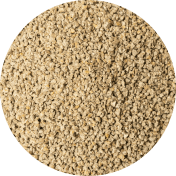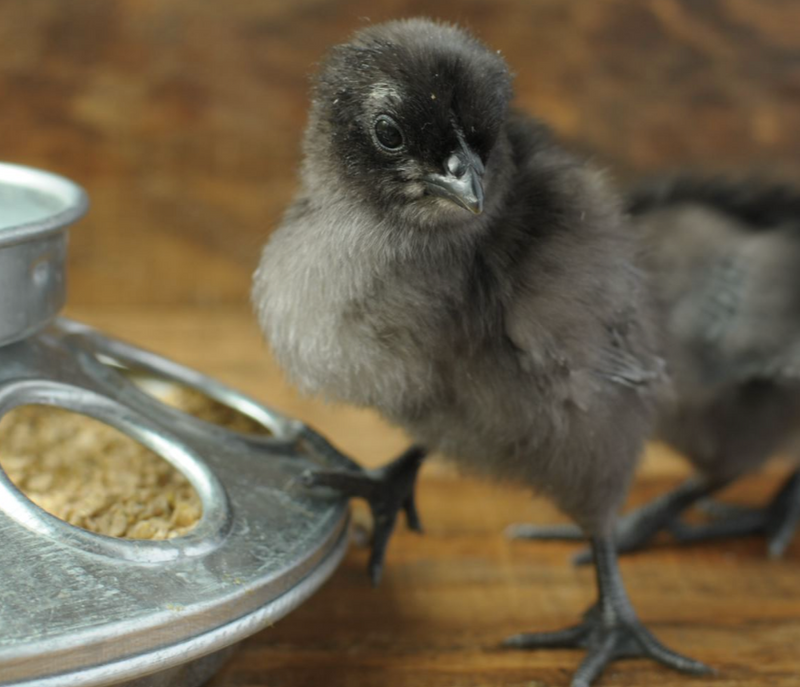Mother nature knows best. One of the greatest examples of this is watching a mother hen raise her own chicks! Incubating chicken eggs is fun, but a broody hen does a way better job than any incubator could ever do at hatching chicks. Raising those cute little fluff balls doesn’t have to be stressful when you know that mama hen knows exactly what to do for them.
What is a Broody Hen?

A broody hen is a hen who wants to sit on eggs and hatch them. The unique characteristic of broodiness is an instinctual behavior that ensures the survival of the species.
Why Do Some Hens Tend to Be More Broody?
Over the years, the broody instinct has been bred out of many chicken breeds in preference for production characteristics such as egg production. Since hens stop laying when they are broody it is not a desired trait in many production breeds.
Some light breeds, such as breeds in the Mediterranean or Continental breed classes, are flightier and more active, and therefore less likely to want to brood a batch of chicks. These include Minorcas, Sicilian Buttercups, Hamburgs, and Lakenvelders.
However, other chicken breeds still retain the full instinct to be broody, which is essential for keeping the species alive. Large breeds, such as breeds in the English or Asiatic breed classes, are usually more inclined to be broody.
Here are some breeds that are known to have strong brooding instincts:
- Australorp
- Orpington
- Cochin
- Silkie
- Japanese bantams
- Old English game bantams
Sharing the Duty: Hatching Chicks with a Different Chicken Breed
Many times, a broody hen from one breed will be used to raise chicks of different breeds or even different poultry species! When it comes to brooding, broody hens don’t seem to care what their babies look like, just so long as they have babies to care for.
How to Tell if Your Hen Is Broody
Are you wondering if your hen is broody? Trust me, you will know when you have a broody hen! Broodiness often occurs in the spring, the natural time for birds to want to build a nest and raise their young. The combination of longer daylight hours and warmer temperatures often triggers the instinct to brood. However, some hens will choose to go broody no matter what time of year it is!
Signs of a hen who has gone broody include:
- Refusing to leave the nesting box but doesn’t lay any eggs
- Not roosting at night
- Hissing, growling, and pecking at you and other birds who get near her nest
- Hunkering down while fluffing up
- Removing her from the nest results in her plopping down on the floor and not moving
- The hen releases a large and very stinky ‘broody poop’ once off the nest
- The presence of a ‘broody patch’ on the hen’s breast where she has plucked out her own feathers to line the nest with
How to Handle Unwanted Broodiness
If a hen goes broody during the wrong time of the year or if you don’t want a broody hen, you will have to break the hen of her broodiness. Being broody when broodiness is not needed is not good for the health of the hen. For tips on how to discourage a hen from being broody, make sure you read How to Break a Broody Hen.
How to Prepare for a Broody Hen to Hatch & Raise Chicks

Before you introduce eggs or chicks to a broody hen, it’s important to be sure that your hen A) is committed to being broody, and B) has everything she needs to be a successful surrogate. Testing your hen and providing her with the best nesting pen helps ensure that you’re heading down the right path toward happy, healthy chicks.
Ensure Your Hen is Up for Hatching & Raising Chicks
Since being broody relies on a lot of energy reserves, it is important that the broody hen is in good health prior to being broody. A healthy broody hen will have plenty of fat reserves, be parasite free, and be in good physical condition for the long and grueling three weeks of incubation.
‘Chick-Readiness’ Testing a Broody Hen
Broodiness is a desirable trait if you want a mother hen to raise chicks! There are a few things you will need to do in order to prepare for having a mother hen and her chicks. Some hens think they want to be broody, then a few days later they give up on the task and abandon the nest.
You will want to test the broody hen to see if she is a committed broody. To see if your hen is truly broody, here are a few tests you can try:
- Remove the hen from her nest and see if she returns to the nest within a 20- to 30-minute time span
- Move the hen to a brooding pen, and see if she settles down in a new nesting area
- Give the hen ‘dummy eggs’ or fake eggs for a few days to see if she will incubate the eggs without abandoning them
A broody hen who is committed to her nest will often be a reliable mother in the years to come. Once you are sure your broody hen is committed, it’s time to set up a brooding pen!
Setting Up a Brooding Pen

Broody hens can raise chicks within a flock setting, however, it is a little more tricky compared to setting up a private brooding pen for her. Since a broody hen will take up nesting box space, it is often best to remove her from the normal laying nesting boxes in the coop and provide her with a brooding box within her brooding pen.
When a hen is allowed to nest in the nesting boxes, it can be difficult to tell which eggs are the ones she is supposed to incubate and which eggs you need to collect that were laid by the other hens. Keeping the broody hen separate from the other laying hens allows you to give her specific eggs to hatch. It also allows you to more easily introduce chicks to her.
The benefits of setting up a brooding pen, include:
- Giving the hen privacy from other hens
- Ensuring she doesn’t get bullied off her nest
- Helping you keep better track of the incubating eggs
How-To Set Up a Brooding Pen for Your Hen
To set up a broody pen, you need an area of space that can be partitioned off from the rest of the flock. The pen can be within the coop, or it can be a completely separate structure from the coop.
1. Size
A brooding pen should be approximately 3 feet by 4 feet in size. This allows space for a nesting area and gives the hen enough space to stretch her legs and relieve herself away from her nest. Access to the outdoors and a dust bathing spot are also bonus features of a well set-up brooding pen!
2. Predator-Proofing & Weather-Proofing
Ensure that the pen is predator-proof and protected from the weather as well. Many of the same principles that go into building a safe and secure coop apply to your brooding box as well.
Just as you do for your coop, survey the nesting area regularly to ensure there are no vulnerable areas that show signs of a predator trying to access your hen and chicks.
3. A Suitable Nesting Spot
Within the pen, the hen will need a nesting spot that will remain dry and protected from the elements. If the pen is full of suitable litter, the hen may just make her own nest in a corner of the pen. Alternatively, you can provide a brooding box within the brooding pen.
A broody hen likes private, dark, and safe areas to build her nest. A brooding box can be 14 to 16 inches square (or smaller for bantam hens) and should mimic a nesting box environment.
Whether the nesting spot is on the floor of the brooding pen or in a brooding box, it should be lined with deep, fluffy, and dry litter. The litter should aid the hen in building her nest and keeping her eggs warm. Large flake wood shavings, straw, or hay are often used as brooding litter.
Making Use of Her Feathers
The mother hen will also line her nest with her own feathers. She will pull feathers from her own breast to line the nest with and to create a bare patch of skin on her breast. The bare patch will also press against the eggs to provide heat and moisture for incubating.
4. Food & Water
Lastly, the brooding pen should have a source of food and water for the broody hen. As tempting as it may be to provide the food and water close to the nesting spot, it is best to keep the food and water away from the nest. This encourages the hen to leave the nest for a few minutes each day to get food, water, and to relieve herself.
Make sure the food and water can’t be tipped over and that they stay relatively clean.
How to Move a Broody Hen to Her Pen
Once you have the brooding pen all set up, it is time to move the broody hen to her pen. This is one way to test and see if the broody hen is determined and committed to being broody. The move is best made just before normal roosting time in the evening.
Once moved to the pen, the broody hen will want to set up camp quickly before nightfall. She will be more likely to adjust to her new nesting spot and become a committed broody.
Putting dummy eggs in her nest will also encourage and remind her that she still wants to be broody despite the new surroundings.
Give the hen a few days in the brooding pen before giving her actual hatching eggs or introducing young chicks. A committed hen will continue to be broody even after being moved to the brooding pen.
Now comes the exciting part, giving the mother hen hatching eggs or chicks! Let’s start by discussing hatching eggs.
How to Give a Broody Hen Eggs to Hatch

A broody hen can accommodate about a dozen eggs that are the same size that she normally lays. In general, all the eggs must be able to fit comfortably beneath the hen. If eggs poke out from underneath the hen, then you know she has too many eggs and she won’t be able to successfully incubate them all.
If the eggs are from a different breed or species, then the hen may be able to accommodate up to 10 larger eggs or 18 smaller eggs. Odd-numbered clutches are often best since odd numbers of eggs often fit well together in a nest.
Where to Find Eggs for Your Hen to Hatch
To acquire hatching eggs to give the broody hen, you can collect them from your own flock, buy hatching eggs locally, or mail order hatching eggs from breeders or hatcheries. If you collect hatching eggs from your own flock, you must have a rooster with the hens in order to collect fertile hatching eggs!
How to Hatch Eggs with Your Hen
After testing your hen and setting up your nesting pen, hatching eggs is relatively straightforward. All you need to do is:
1. Mark Your Eggs
If you are letting a mother hen nest in the coop, where other hens have access to the nest, you will want to number and date the eggs you plan to let the broody hen incubate. Then every day you will need to check under the broody hen and remove any non-labeled eggs.
2. Move the Eggs into Place
Once you have acquired the hatching eggs, slip them under the broody hen in the evening. Make sure you remove any dummy eggs that you were using to encourage broodiness! A committed broody hen will usually accept the eggs with no problems.
3. Watch Your Hen Hatch Her Clutch
Once she has been given a clutch of eggs, she will begin to get serious about brooding.
How to Give a Broody Hen Chicks

Giving your broody hen baby chicks is a little more tricky than giving her eggs to hatch, but it can be done!
When a hen goes broody, she often anticipates incubating eggs, then caring for chicks once the eggs hatch. When you skip the incubating process and go right to giving the hen baby chicks, she may be a little confused. However, committed broody hens will often accept chicks no matter if she hatched them out or not!
Setting Your Hen & Chicks Up for Success
First, when introducing chicks to a broody hen, you want to mimic how many chicks the mother hen might have hatched naturally. That goes back to determining how many eggs the broody hen would have been able to incubate.
Allow the hen to be broody in her brooding pen for a few days before introducing the chicks. Perform all the broody hen tests and give her dummy eggs to make it seem like she has been incubating eggs.
Consider the Age of the Chicks
The chicks that you plan to introduce to the mother hen must be young enough to imprint and bond with the mother hen. The bond between a mother hen and chick begins while the chick is still in the egg. When introducing young chicks to a broody hen, some of the bonding time is skipped, but young chicks can still imprint on a mother hen if they are young enough. Generally, chicks that are no more than a day or two old are most readily accepted by a broody hen.
Timing the Introduction
Slip the baby chicks under the mother hen in the evening hours. You want it to be somewhat dark but you also want enough time to be able to monitor the mother hen and her new chicks.
Signs the mother hen has accepted her new brood
- Spreading her wings to cover the chicks
- Clucking in communication with the chicks peeping
- Tidbitting, or showing the chicks were to find food and water
- Being protective of the chicks when you try to pick one up
Once a mother hen has accepted her brood, she will be dedicated and protective of her new babies!
How to Introduce Older Chicks to a Broody Hen

Introducing older chicks to a mother hen is often not recommended, but it can be done– especially if you are using a broody hen who has raised chicks before.
‘Older chicks’ are harder to introduce to a mother hen because of how independent they have become without the presence of a mother hen. However, reliable broody hens who have raised chicks before will be more likely to accept older, independent chicks. A broody hen who sat on eggs but none of the eggs hatched may also be desperate enough to accept any chicks you give her.
When giving a mother hen older chicks, proceed with a little more caution and take more time than when introducing young chicks.
Caring for Your Broody Hen
After you have given a broody hen a clutch of eggs to sit on, you just need to make sure momma hen has everything she needs, such as nutritious food and fresh water. She will take care of the rest. For example, a broody hen will know just what temperature and humidity her eggs need, as well as when and how to turn them in the nest.
Monitoring Your Hen’s Food and Water
What you can do is make sure that the broody hen always has plenty of fresh, clean water and food available for when she leaves the nest on short breaks. Keep an eye on the food and water levels so that you can tell if she is getting up to eat and drink periodically.
What to do If Your Broody Hen Doesn’t Get Off Her Nest
Don’t worry if she doesn’t leave the nest for the first few days after being given her clutch of eggs–this is normal. Kick-starting the incubation process requires her undivided attention, so she may not leave the nest to eat or drink until a few days into the incubation period.
Eventually, she will get up to eat, drink, and relieve herself. In which case, you will need to remove a giant, stinky broody poop from the brooding pen!
You can feed the broody hen scratch grains rather than layer feed to help keep her poops more solid and to help keep her weight up during this time of naturally low food consumption.
After the first few days of sitting on the nest, the broody hen will take 5- to 20-minute breaks every few days to eat, drink, and stretch her legs. Remove any broody poops from the brooding pen on a regular basis and continue to ensure that the hen’s food and water are always full and fresh.
Counting Down the Days Until Hatching

When it gets down to the last three days of the incubation period, you may notice that the broody hen once again will not leave the nest at all. Don't try to encourage her to move at this point. She knows what she is doing. The eggs need higher humidity prior to hatching and the temperature must also be correct for hatching time.
As it gets closer to hatch day, you will hear the mother hen clucking and murmuring to her chicks as she encourages them to hatch. Even if you hear little peeps coming from under the mother hen, don’t disturb her! The hatching chicks needs the correct temperature and humidity that mother hen is providing during hatch time.
The most you should do during the hatching period is help guide any chicks who happen to wander too far from their mama hen back to her side so she doesn’t have to leave her nest.
Freshly Hatched Chicks
All the chicks should hatch within a few hours of each other. Then the mama hen will leave the nest and start teaching her chicks where to find food, water, and how to explore their environment!
If there are any eggs left in the nest, you can examine them for pips (a sign that a chick may still hatch) or candle them to see if they even developed or not. Any eggs that don’t hatch can be removed from the brooding pen.
What to Do During a Draggy Hatch
Sometimes a draggy hatch will occur, in which case not all the eggs hatch within a few hours of each other. Sometimes the mother hen will stay on her nest until she is sure all of the eggs that are going to hatch have successfully hatched.
What to Do When the Mother Hen Leaves the Nest
However, if the hatch is taking too long, a mother hen may leave her nest to care for the hatched chicks even when other chicks are still hatching from their eggs. This can be dangerous for the chicks who haven’t hatched since the shell membrane could dry out and trap the chick inside the egg.
If that happens, you will want to encourage the mama hen to return to her nest by removing her food and water for the time being. Without food and water, she may return to her nest and finish the job of letting the remaining chicks hatch.
If that doesn’t work, you will need to remove the chicks that have already hatched so that mama hen can focus on caring for the eggs that are still in the process of hatching. Once all the eggs have hatched, you can return all the baby chicks to mama hen.
What to Do if the Mother Hen Rejects Her Hatchlings
In rare cases, a mother hen will completely reject her hatchlings. This most often occurs when a mother hen is brooding for the first time, however, it is not common in general. If a mother hen completely ignores her chicks or even shows aggression towards them, you will have to be prepared to care for the chicks yourself. You will need to set up a brooder for the chicks and be their surrogate mother.
How to Care for a Hen with Chicks

Once a mother hen has chicks, whether she has hatched them herself or you gave her some young chicks to care for, she will know how to care for the chicks. You just need to provide her with the resources to do so.
Feed & Water
The feeder and water in the brooding pen need to be low enough to the ground so that the young chicks can reach the food and water. They should also be fastened securely so that the mother hen can’t knock the food or water over in her efforts to teach the chicks how to eat and drink.
You can feed the mother hen and her chicks chick starter grower feed. The hen won’t be laying eggs while she is raising her chicks, so the chick starter feed will provide her with all the nutrients she needs as well as provide the chicks with the nutrition they need to grow.
Freedom & Shelter
A mother hen will make sure her chicks stay warm enough and will keep track of them to the best of her ability. Mama hen and her brood can have access to the outdoors as long as she has a protected place to bring her chicks in the case of inclement weather or danger. In the evening, the mama hen and her brood should always be kept in a safe, predator-proof housing or pen.
As the chicks grow, you may need to move the mother hen and her brood to a larger pen or coop. You can raise the feeder and water as the chicks grow as well just so long as the smallest chick can still reach both the food and water.
When Are the Chicks Big Enough to be Independent?

A mother hen will care for her chicks until they grow in their first set of adult feathers. As they become more independent, the mother hen will become less tolerant of them and will gradually switch from mothering the youngsters to simply being a guardian.
As the mother hen finishes her job of raising the chicks, she will want to rejoin her flock. You can wait until the chicks are also old enough to join the flock or you can simply let mother hen rejoin the flock and you will continue to raise the chicks until they are old enough to join the flock as well.
Remember, reintegration may be needed whenever introducing young chickens or a mother hen who has been away from the flock for a while back to the flock. Follow proper integration methods to ensure a smooth transition back to flock life!
Bring on the Babies! Use a Broody Hen to Hatch and Raise Chicks
Using a broody hen to hatch eggs or raise chicks is both exciting and rewarding! You will quickly learn that the mama hen knows exactly how to care for her brood, and it can be a much less stressful experience if you let the professional do her job. Just take care of the mother hen, and she will take care of the rest, whether it be incubating those eggs or wrangling all those chicks!















